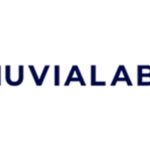The Power of Storytelling: How to Use Story to Inspire Action
Have you ever wondered why Kindergarten teachers captivate through stories while your eyes glaze over at a college professor’s reciting of facts and figures? Or why you easily remember your child’s birthday but can’t remember the years of the First World War or the date you started your last job?

The answer is simple: one set has a personal, emotional narrative behind them and the others do not. One of the most powerful tools we have in our ability to inspire is through narrative – through our own emotional stories.
Human beings have a passion for plots. Our lives, in many ways, are stories. We have a beginning, middle and end – a story arc complete with a few interesting plot twists in between. It’s natural then that we want to organize and understanding in a narrative way. Stories are shared in every society, in every age and in every social context. Stories, in many ways provide the greatest ability for us to understand, learn and inspire.
But how do we create our own narrative?
A good narrative is simple, emotional and true. Similar to a good movie they should have begin with a challenge, emotionally put the audience at the center of the story by showcasing the struggle to overcome the challenge and galvanize a response with a resolution that calls them to action.
Think about a non-profit that has inspired many to action. Take for example Susan G. Komen for the Cure. How do they inspire people and how can you do the same? Let’s break down the elements of their narrative.
Komen claims to be the “world’s largest grassroots network of breast cancer survivors and activists fighting to save lives, empower people, ensure quality care for all and energize science to find the cures. [We] are fighting every minute of every day to finish what we started and achieve our vision of a world without breast cancer.”
Is the story they are trying to tell simple?
Yes: Komen wants to guide people through the breast cancer experience, save lives and bring groups together (think the pink ribbon) to end breast cancer.
Is it emotional?
It’s hard to imagine something more emotionally compelling than cancer survivors telling their stories and mobilizing groups to show strength, unity and support.
Is it true?
Unfortunately, it is all too true. That is why the last part of their story is so important—to “energize science to find the cures.” Breast cancer continues to be a major issue that needs advocates like Komen.
So, Komen met the first elements of a good narrative. But in order to ensure that the narrative resonates, it needs to offer up a challenge, struggle and resolution.
Does it?
| Challenge | Audience at Center of Story | Resolution |
| Komen presents two challenges within their narrative. Cancer is challenging enough. But second, they present an empowerment component for those going through a cancer experience. | The audience is the story in Komen organisation. Through events including the Race for the Cure, other fundraisers, and wearing pink ribbons, the audience is part of the struggle. | Working toward “our vision of a world without breast cancer.” In other words, we are our own solution. Through unity, education, research and more we can resolve this challenge. |
Komen uses data to back up their stories but not to drive their stories. Their narrative is created through emotion and simplicity and resonates because of this. When creating your own inspiring narrative you can use the simple matrix above to ensure you have the ability to emotionally connect and resonate.
Read:
- Are You Hungry Enough For Success? – archely
- 1000+ Motivational reels bundle pack to ignite your journey to greatness – archely
- What is motivation? sail across the ocean in your yacht – archely
- Positive Light In A Dark Negative World, staying positive in a negative world – archely









